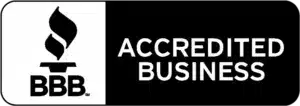The End of Day Statement is a summary of all activity for one register for a z-count period. A z-count period represents a business day. Other than a calendar day, the z-count period is defined by when a business opens and when it closes. The End of Day Statement is also called z-tape.
Note: When you balance/finish the day on your POS, the balance in KORONA POS will reset to zero. This also applies every time you use the balance cashier function.
Commodity Group
The commodity group section shows the Commodity Group Number, Name, Quantity of products sold, Revenue generated, and Discounts given.
Customer Group Revenue
Customer Group Revenue shows the customer Group Number, Name, Number of Receipts per Group, Revenue Generated, and Discounts given.
Income/Expenses
Income/Expenses shows account transactions for the day. If it’s in parentheses that indicates that the balance is negative and money is leaving KORONA POS.
Sales Tax
Sales Tax shows sector Name, Tax Amount, Gross Sales, and Net Sales.
Payment Methods
Payment Methods shows the Expected (the amount KORONA POS expects you should have) balance, the Actual (what the cashier put in as the balance) balance, and the Difference between the two. This should only matter for cash if you have integrated credit.
Keep in mind that the cash payment method expected takes into account what happened in the accounts for the day. Thus, if your cashier used a cash drop to remove money from the drawer to put in a safe or pay a vendor, your Expected balance will be affected.
Cashier Actions
Cashier Actions shows the total of cashier actions for the day:
- Receipts Finished – How many receipts were processed
- Receipts Removed – Voids
- Return Goods – Returns
- Receipt Cancellations – Canceled receipts
- Item Cancellations – Items removed from receipts
- POS Cash Checks – If the cashier has used the Cash check function, the number of times will show here
- Receipt Discount – Receipt Discounts will show here (not item discounts)


